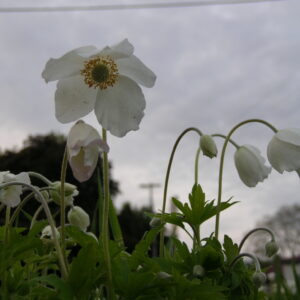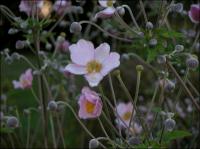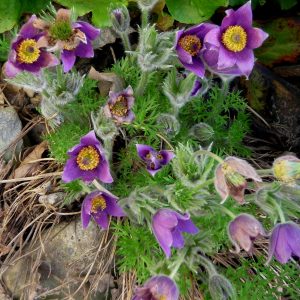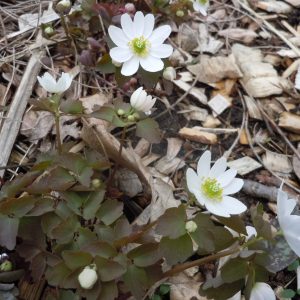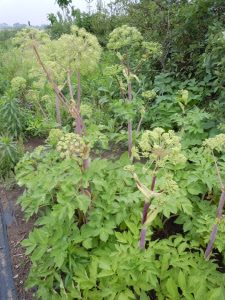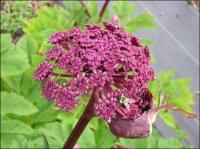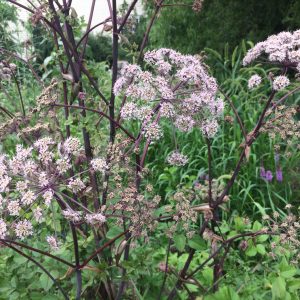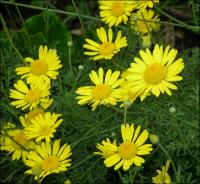Perennials & Biennials
Showing 33–40 of 485 results
-
Anemone sylvestris Snowdrop anemone/Wind flower Z 4-9
Spring and sporadically in fall - pure white saucers with contrasting yellow stamens
Spring and sporadically in fall – pure white saucers with contrasting yellow stamens
Size: 12-20" x 12-20" spreading
Care: Sun to part shade, moist well-drained soil
Native: Europe and Caucasus, “grows naturally in many parts of Germany… ”Gardeners’ Dictionary, 1768In 1629 Parkinson extolled the Anemone: “The sight of them doth enforce an earnest longing in the mind of anyone to be a possessour of some of them…” The leaves of the plant were used in ointment made into “cold grieses” was used to “warm and comfort the parts (and) the roote… is apt to drawe downe rheume if it be taste. The name Anemone is Greek for the wind, “so called, because the flower is supposed not to open, except the wind blows.” The Gardeners’ Dictionary, 1768. In Greek mythology Anemos, the Wind, uses these flowers to herald his coming in early spring. Grown by Jefferson at Monticello.
-
Anemone vitifolia ‘Robustissima’ syn. A tomentosa Z 4-8
Pearl-like buds open to single, ballerina- pink umbels in late summer and fall
Pearl-like buds open to single, ballerina- pink umbels in late summer and fall.
Size: 30"x 36" spreader
Care: Sun to part shade in moist to moist well-drained soil
Native: cultivated variety of A. vitifolia native to Nepal.The word Anemone is Sanskrit meaning he breathes. The Roman, Pliny wrote that the Anemone only opens with the wind. In Greek mythology Anemos, the Wind, uses these flowers to herald his coming in early spring, Paradisi in Sole Paradisus Terrestris.
In 1629 Parkinson extolled the Anemone: “The sight of them doth enforce an earnest longing in the mind of anyone to be a possessour of some of them…” The leaves of the plant were used in ointment made into “cold grieses” was used to “warm and comfort the parts (and herald his coming in early spring. the roote… is apt to drawe downe rheume if it be tasted or herald his coming in early spring. This cultivar introduced from its native Nepal to European garden cultivation by Lady Amherst in 1829. -
Anemone vulgaris syn. Pulsatilla vulgaris Pasqueflower Z 4-8
Nodding, bell-shaped purple petals with yellow centers, flowers in early spring. Medusa-like seed heads.
Nodding, bell-shaped purple petals with yellow centers, flowers in early spring. Medusa-like seed heads.
Size: 8" x 8"
Care: sun in well-drained to moist well-drained soil
Native: Europe
Wildlife Value: Deer resistant, early pollen source for bees.
Awards: Great Plants for Great Plains, Royal Botanical Society Award of Garden MeritCultivated in Europe since at least medieval times. Possibly used by the Druids (about 2000 years ago) in their festival of the dawn goddess. Grown in the Eichstätt Garden, the garden of Johann Konrad von Gemmingen, prince bishop of Eichstätt in Bavaria, c. 1600. Jefferson planted this in 1771 in a shrubbery at Monticello. Called Pasque flower because it blooms at Easter time, well, maybe for gardens in Missouri or Maryland.
-
Anemonella thalictroides Rue anemone, Windflower Z 4-7
Delicate white to pinkish cups in spring to mid-summer light up woodlands
OUT OF STOCK
Delicate white to pinkish cups in spring to mid-summer light up woodlands
Size: 8" x 8"
Care: part shade in moist well drained soil
Native: N.H through Ontario to Minn. including Wisconsin, south to Florida & KansasFirst described by Linnaeus – 1753. Englishman Philip Miller grew this in 1768. Named Anemonella because the flowers resemble those of the Amenome and thalictroides because the leaves resemble the leaves of the Thalictrum, Meadowrue. Native Americans ate the tuberous root for food and made a tea from Rue anemone by steeping the root in water. The tea supposedly cured flu-like symptoms of diarrhea and vomiting.
-
Angelica archangelica Biennial Z 4-9
Spectacular chartreuse globular umbels
Spectacular chartreuse globular umbels of flowers in July
Size: 6’ x 3’
Care: sun in moist to moist well-drained soil
Native: Russia, ScandinaviaAngelica is Latin for “angelic,” because an angel is said to have revealed to a monk that the plant cures the plague. Ancient – used medicinally for more than 2000 years. Used to flavor reindeer milk in Scandinavia, to flavor perfume & liqueurs, and to make a French delicacy of candied stalks. Add fresh leaves to your salad or make a tea from dried leaves. Folklore claims it has angelic healing properties. Introduced to England in 1625 by Tradescant the Elder who collected it on the island of Archangel in Russia.
-
Angelica gigas Giant angelica RESEEDING BIENNIAL Z 4-9
Dramatic, deep purple, spherical umbels in midsummer, purple stems
Dramatic, deep purple, spherical umbels in midsummer, purple stems.
Size: 4-6' x 4'
Care: full sun to part shade in moist well-drained soil. Be sure to let the flowers drop its seeds and do not weed the seedlings out the following spring. It reseeds readily from fresh seed.
Native: mountain streams in Korea
Wildlife Value: Butterfly plant, attracts baldfaced hornets (actually wasps) who are so busy collecting nectar that they ignore people. Deer resistantAngelica: Latin for “angelic,” because an angel is said to have revealed to a monk that the plant cures the plague but, according to Miller (1768), it means “from the angels, on account of its excellent qualities.” This species 1st collected by Japanese botanist Takenoshin Nakai before 1917. (1882-1952) professor, author, scholar and official botanist for Korea in 1910 after Japan annexed Korea following the Sino-Japanese and Russo-Japanese wars. He explored the botanically unknown mountains and forests and introducing its plants to the world through his international contacts and authorship of Flora Koreana. Used in its native Korea to remedy “anaemia, hemiplegia and women’s diseases.” Korean name is Cham-dang-gui.
-
Angelica sylvestris ‘Purpurea’ Wild Angelica Self-seeding Biennial Z 4-9
Imposing, glossy, deep purple stems and buds with large umbels of mauve to dusky pink to purplish late summer-early fall.
Imposing, glossy, deep purple stems and buds with large umbels of mauve to dusky pink to purplish late summer-early fall.
Can not ship to : Maine
Size: 5-6' x 5'
Care: sun to part shade in moist to moist well-drained soil. Be sure to let the flowers drop its seeds and do not weed the seedlings out the following spring. It reseeds readily from fresh seed
Native: Europe in moist woodlands and bogs.
Wildlife Value: attracts bees and butterfliesFresh stems or boiled leaves eaten medicinally to cure scurvy. In Austria made into a tea to remedy infections, flu, stomach ailments and respiratory ailments. The species described in Species Plantarum 1: 251. 1753 (1 May 1753) by Linnaeus. William Jackson Hooker described the wild species growing in England as having “stem purplish, pubescent above, as well as the umbels.” The British Flora p. 180 (1860)
-
Anthemis tinctoria Marguerite
Cheerful yellow daisies all summer, non-stop.
Cheerful yellow daisies all summer, non-stop.
Size: 2-3' x 2'
Care: Full sun well-drained to moist well-drained soil, drought tolerant
Native: Eastern EuropeThis promiscuous flower sports maize colored daisies with ferny, aromatic foliage. The name Anthemis evolved from anthemon meaning “free flowering,” which describes the plant’s carefree, June through fall, blossoms. Philip Miller illustrated Marguerite in his 1750’s Dictionary. The flower was used to dye wool and to make tea.

